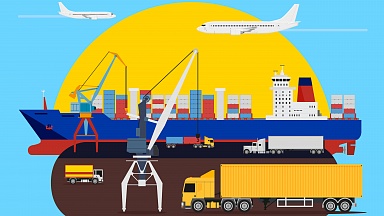Container shipping operations at southern China’s busiest export container port Yantian may be slowly recovering from the port’s partial closure since last month, but the incident has already piled on significant extra pressure to already-disrupted global supply chains — in what seems to have become a «worrying» ‘new normal’ for shippers, the world’s largest container line Maersk has acknowledged.
Commenting last week on the wider impact of the disruptions in southern China, Maersk noted: «A few weeks into a very substantial port congestion in Yantian caused by a Covid-19 outbreak, supply chain disruptions continue to be very present in global trade. Productivity is gradually set to increase as more workers return and more berths reopen, but the damage has already been done. The current estimated wait is over a fortnight, causing many carriers to divert vessels to other ports.»
With over 300 sailings from container lines already set to omit Yantian by last week, Maersk noted: «Fighting to get reliability back into operations and services back on schedule after the Suez incident in March, the port congestion in Yantian, with neighbouring ports Shekou and Nansha also affected, is an added pain at a time where global supply chains are already stretched.»
‘Worrying’ new normal
Maersk acknowledged that the recent pattern of disruption after disruption was a major challenge, noting: «The trend is worrying, and unceasing congestion is becoming a global problem. Due to Covid-19 and a significant volume push since the end of last year, terminals are becoming global bottlenecks — be it at berths, yards, or gating out cargo. And it’s continuing throughout the logistics chain — in the warehouses, the distribution centres — with numbers on the rise.»
Maersk continued: «The most prominent bottleneck right now is Yantian — given the sheer size of it, with it being the third largest terminal in the world; but still there are many other ports where a one- or two-day wait is becoming the norm, even if arriving on time.»
Managing supply chains
Maersk argued that in this highly disrupted environment, «choosing a partner that can provide end-to-end supply chain visibility, along with multiple flows to market and a controlled asset network, becomes more and more crucial», insisting that Maersk was «working around the clock to alleviate customer pain points», adding that it had «outlined our action plan for the rest of the month — to mitigate impact as best as we can and give you as much visibility into the situation as possible».
«In releasing this information, we hope you have enough time to manage your supply chains accordingly. Identifying possible issues early on will make it easier to react quicker and make decision based on data versus time.»
It also said customers can use its interactive map functionality «to track any Maersk vessel in real time and gain access to AI-powered predictive analysis and estimated times of arrival», adding: «To infuse even more visibility into your supply chain, Maersk offerings such as Maersk Flow and TradeLens provides consistent and holistic views of current shipments and corresponding documents for improved task execution and planning.»




